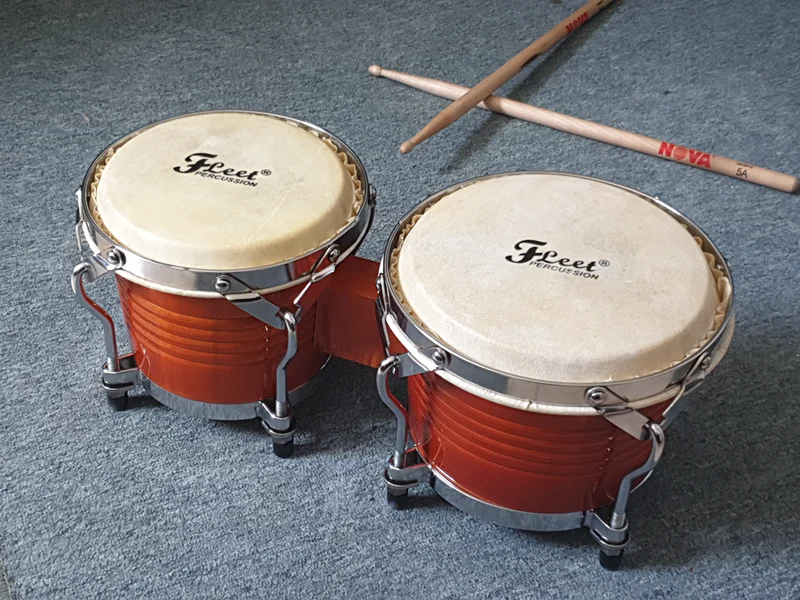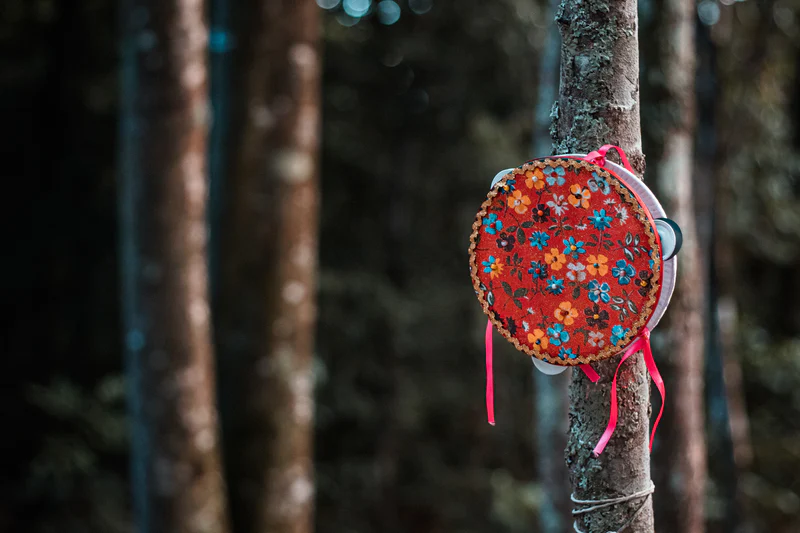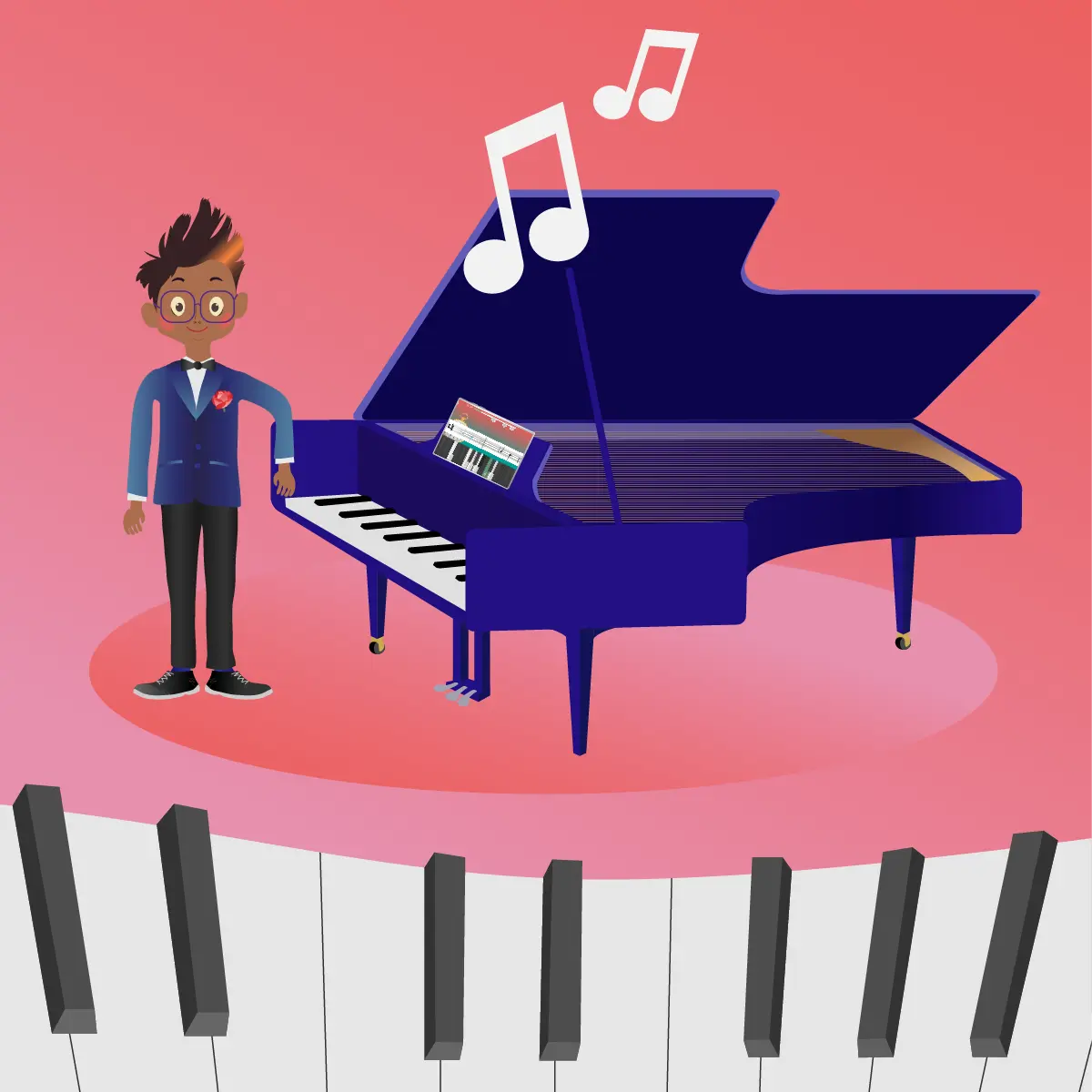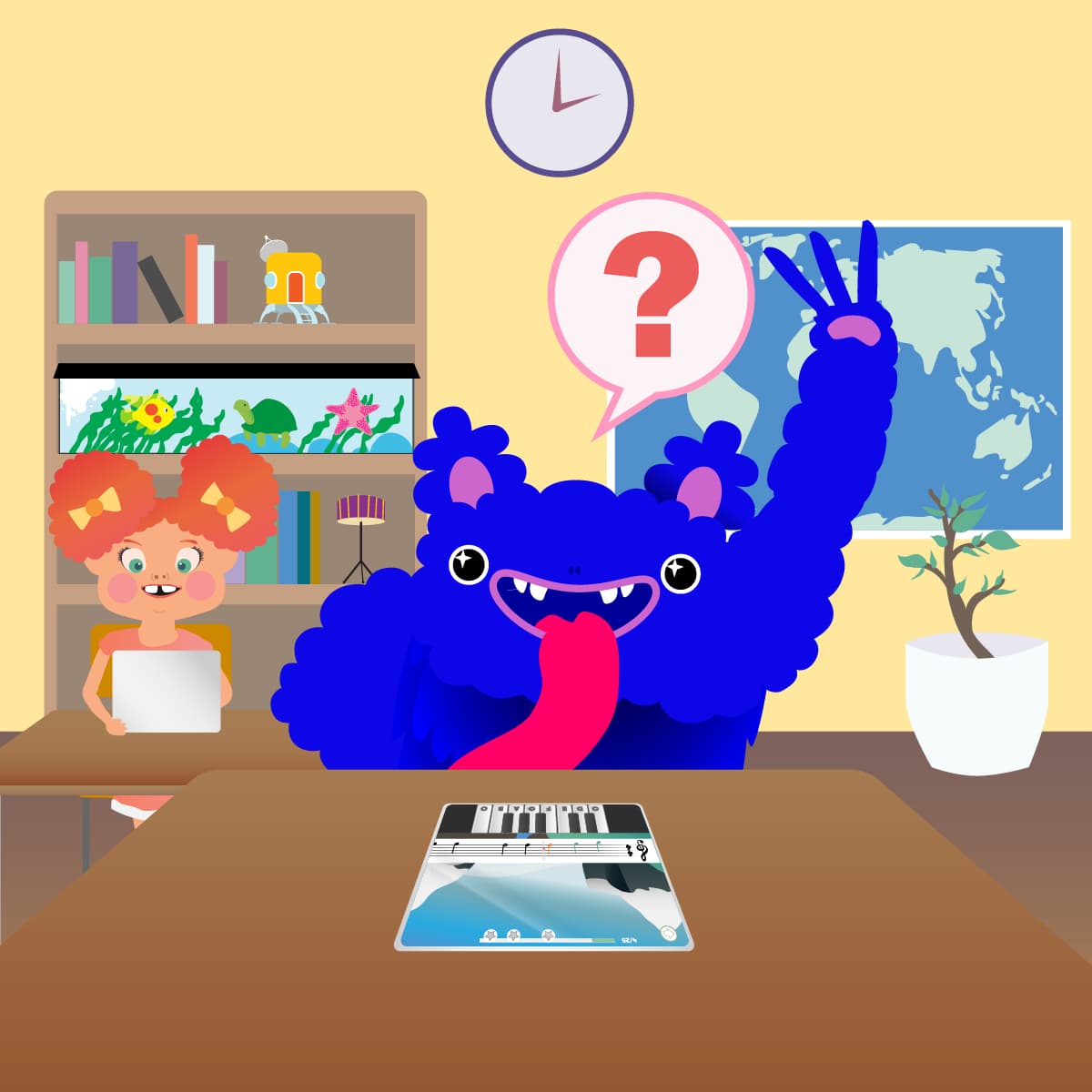By Jonathan Duffy, Arctic Meta
Most parents are aware that certain activities are incredibly beneficial to growing children. We always want our kids to have the best possible advantages in life, so we try to make sure they have access to these things.
We know that learning a second language is a must in the modern world; we know team sports help children develop coping skills and stay healthy. We also know that learning to play an instrument has untold benefits.
Studies have shown that learning a musical instrument can do everything from help relieve stress, to developing incredibly complex motor skills. Learning an instrument can even make your brain bigger. A study by Harvard University in 2003 found that the brains of musicians had more grey matter in them.
So we know that playing an instrument is good for our kids, but nobody really wants it to be hard for them.
I mean, sure, we’d all love our kids to be amazing at the violin; but not every kid is going to want to start learning an instrument at the age of four. Also, not every parent has the emotional stamina to put up with the years it will take for the sounds of a dying cat to eventually become music.
So what instrument should you pick?
Well, firstly, it helps if you make sure it’s an instrument that your child actually has an interest in.
Secondly, there are some instruments that are considered easier to learn than others.
Below we’ve compiled a list of the 11 easiest musical instruments to learn. Read on to find out which one might be right for you.
1. Recorder
The recorder’s reputation often precedes it.
For some parents, just the mention of this instrument is enough to make them shudder, but not everyone is going to sound incredible as soon as they pick something up. When played well, the recorder can actually be a soothing melodic instrument.
For many of us, the recorder was the very first instrument we ever learned.
The reason for this is that the recorder is incredibly easy to learn. It’s a great instrument to provide some basic musical knowledge to children. Learning the recorder can easily help a child learn how to read music and understand concepts like pitch and tempo.
It doesn’t take a lot of breath capacity to make some sound on a recorder, so it’s great for students with growing lungs. Recorders can be made of wood or plastic and are relatively inexpensive. They also come in a range of different pitches: tenor, alto and soprano.
The recorder is an excellent instrument to get started with, and if your child manages to master it, they can graduate very quickly to a saxophone, clarinet or flute because the placement of the fingers is the same.
2. Bongos
In pop culture, most people might think of bongo drums as the kind of instrument that would accompany a beat poet or something that might play in the background of an odd alternative theatre piece.
Bongos are actually a very old and mysterious instrument. Nobody is really sure exactly where they came from, but the first recorded uses were by Afro-Cubans in the late 19th century.
Bongos are made of two small open bottomed drums that are connected together. They have a larger and smaller drum. In Spanish the larger drum is called Hembra (female), and the smaller is Macho (male). Each drum has a different kind of sound, the Hembra has a lower tone, and the Macho is higher.
Bongos are a great instrument to teach rhythm and basic percussion. They are also inexpensive and very portable. Bongos also aren’t terribly loud, so they’re a great instrument that your child can play almost any time of the day.
3. Tambourine
The tambourine is often an overlooked instrument. It’s a simple instrument that is also incredibly versatile.
There are a few different kinds of tambourines, but they all have a similar basic structure. They’re round, easy to hold and have small cymbals built into them called ‘jingles.’
The tambourine player can make lots of different sounds depending on whether they shake or hit it.
The tambourine is excellent for teaching the elements of basic percussion. The best part of this simple instrument is that it can accompany just about anything. A child with a tambourine could play along to someone on a guitar or even just explore the sounds it can make while listening to their favourite song on the radio.
4. Keyboard

The keyboard is an incredible instrument for anyone to learn. It’s very easy to start learning, and it will teach any student the basics of music theory.
While learning the keyboard, a student will understand how to read sheet music, turn notes into chords, develop an understanding of harmonies and learn how to play something by ear.
Learning the keyboard also makes it much easier to learn other musical instruments and will develop a keen sense of hand-eye coordination.
Like the guitar, it doesn’t take that long before a student of the keyboard can see some of the rewards of their work.
It might take years to become exceptional, but to be able to play along to their favourite song might only take months.
The keyboard is also an inexpensive way to allow your child to develop skills that will help them in the future if they want to create their own music.
In a digital world, you don’t need to play an instrument to make an incredible song, but most digital music software is based on a keyboard structure, so learning how to play it will save a lot of time.
5. Castanets
Castanets are a small set of inexpensive wooden percussion instruments. Most people associate them with Spanish flamenco dance. However, they are used in the music from quite a few other European countries, like Italy, Portugal and Switzerland.
If you have ever heard the famous song ‘Under the Boardwalk’ by The Drifters, castanets can be heard in the instrumental break, blissfully clapping along to the beat.
The castanets are very easy to play. They attach to the thumbs and fingers, and the opening and closing of the hand makes their rhythmic clicking sound.
They’re an excellent instrument to help a child develop their hand-eye coordination as well as their fine motor skills.
6. Harmonica

The harmonica is not just the instrument of choice for cartoon characters in jail. It’s a versatile instrument that is featured in many musical genres. In the past, the harmonica was most notably associated with bluegrass and blues, but today harmonica can be heard in just about any kind of music.
Harmonicas are easy to learn instruments because the main principles of how they work can be learned in just a few hours. After that, it’s all about practice.
The harmonica is a compact instrument that will allow a child to grasp musical notes and how they sound while also teaching them the basics of reading music and translating that through the instrument.
Even if your child doesn’t take the harmonica up full-time, it’s always a nice little party trick later in life to be able to smash out a little rendition of ‘Piano Man’ by Billy Joel.
7. DJ Controller

This probably isn’t the instrument that immediately comes to mind when it comes to easy learning, but it is actually an incredibly simple and effective tool to learn music.
DJ controllers exist across a broad range of markets. There are expensive models designed for professional DJs, but there are also controllers made especially for home or learning use.
Learning to use a DJ controller is a very fun and modern approach to musical education. You might not think it, but there’s actually a great deal of musical theory that goes into blasting a good DJ set.
Kids who learn to use a DJ controller will develop a keen sense of rhythm, tempo, pitch and what sounds work well together. It also helps them to understand how songs are structured and gives them an incredible outlet for creativity.
If you’re not sure about buying a DJ controller, you can even just start small on a computer or iPad.
There are programs like Garageband that come with libraries of loops and sounds that will enable your child to create songs and learn about music production in no time. There’s also another app that can give your child some experience in the DJ game, but there’s more on that at the end of this blog.
8. The Harp
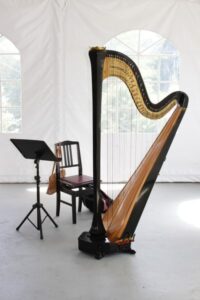
This is probably the one instrument you wouldn’t have imagined seeing on a list of those that are the easiest to learn.
When most people think of the harp, they probably imagine it’s an incredibly complex instrument that takes years to master, and that’s why we tend to only see it in the ballrooms of mansions or at celebrity weddings.
The reality is that the harp is actually one of the easiest string instruments to learn.
People have been playing the harp for thousands of years, long before there was any solid framework for learning musical instruments. Harps can come in a variety of sizes. For example, a Celtic harp can be small enough to sit in your lap.
The harp is much easier to learn than something like the violin because there’s no bowing or frets. You simply pluck the string, and that gives you the note. Harps are an incredibly accessible instrument that creates an ethereal sound and can be an excellent first choice for someone wanting a musical education.
9. Drums
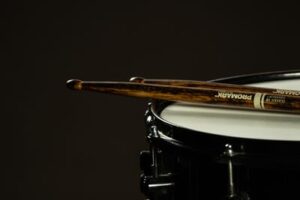
The theory of learning to play a standard drum kit isn’t actually that complex; it’s more about practising a lot. There are also some other unexpected side effects of playing the drums.
Apart from being a great way to relieve stress and help regulate moods, learning to play the drums has been shown to increase academic performance and confidence.
An abnormally large number of drummers usually end up as multi-instrumentalists, too, like Mick Fleetwood (Fleetwood Mac) and Dave Grohl (Nirvana, the Foo Fighters).
The only major drawback to drumming is that you need to make sure you have enough space, and that amount of noise isn’t going to make you enemy number one with your neighbours. Kits can set you back a couple of hundred dollars too.
If drumming is precisely what your kid wants to get into and you’re not sure about the noise, there are some incredible electronic kits on the market. They allow the drummer to play as loudly as they want because only they can hear it through headphones.
Drumming is an excellent avenue to go down if you want some musical education, and let’s face it, we all know the drummers are the coolest members of any band.
10. Guitar

The guitar is a little bit more difficult than some of the other instruments on this list (it’s actually easier to learn the harp), but it’s an excellent instrument for any student to learn because it gives much quicker rewards.
It’s relatively easy to get the hang of chords and strumming, and once you have learned a couple, you can play a song pretty quickly.
The guitar is a great instrument to learn because it also teaches students a different form of musical notation. Learning how to read guitar tablature involves exercising a lot of the reasoning processes in the brain and transposing written instructions into real-life movements.
If you want to get started with guitar, it’s a great idea to begin with nylon strings. These are less tough on little fingers. Guitar players who use steel strings usually develop calluses on their fingers from playing (something they’re often quite proud of).
Also, take into consideration the size of the guitar. You want to make sure that the student’s hands are big enough to reach all the strings.
Encouraging your child to learn the guitar will exercise valuable skills but also might help create an incredibly enjoyable life-long habit. Plus, it can be a great way to share musical passions and bond with your children.
11. Ukulele
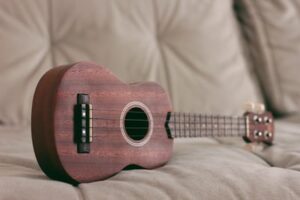
The ukulele is one of the most popular instruments for people to start with. They’re relatively inexpensive to buy, so it’s not a huge investment if it turns out to not really be someone’s thing.
They’re also incredibly compact, so they aren’t going to take up a lot of space (which can be important if you live in an apartment).
The ukulele is similar to the guitar, but it’s much easier to learn because of its small size and fewer strings. The frets are much closer together than a guitar, so it can be a better stringed instrument for little hands.
It’s also pretty easy to learn the most common basic chords. Once you have a few, there are literally thousands of songs available to you. Whatever artist your child is into, there are undoubtedly ukulele versions of their songs ready to be discovered.
Conclusion

Whatever musical journey your child is about to go on, the most important thing is that they have fun along the way. Kids get the most out of experiences they enjoy. They engage the most with learning that gives them a sense of fulfilment, satisfaction and ultimately makes them have a chuckle.
Music learning has untold benefits and you can also combine it with play by delving into the Mussila App. Mussila combines the structure of music theory with play in an interactive game environment. Students play while they learn and also have the freedom to create and express themselves.
One of the best things about the Mussila app is that it functions like a game. When kids are using Mussila, they can do it without help from their parents.
This is a lifeline, because let’s face it, we all want to be there for our kids, but sometimes it would be nice if they could have an interest or hobby that allows us an hour or so to watch netflix.
If you have a budding DJ in the family, Mussila DJ also has you covered. Mussila DJ lets kids create their own musical compositions or even remix songs.
So if you aren’t completely sure where to start, or just want to take advantage of an interactive learning tool, check out Mussila today. Mussila is a piece of screen time you can be sure will be beneficial for your child’s musical learning.


